RACINE, Wis. (SPECTRUM NEWS) — For Chris Mason, fighting the COVID-19 pandemic has become a family affair.
Mason, a professor of genetics at Weill Cornell Medicine, has been working for months to hone a faster, simpler, cheaper coronavirus test — one that could help us get to the broad-scale testing levels experts say we’ll need to suppress the virus. He started this work in his lab in New York City, where he says living through the devastating height of the pandemic felt a little like living through a war.
But now, he’s brought his research back to his hometown of Racine, Wis., at the request of a very important person: His brother, Cory Mason, the city’s mayor.
“It’s good to be back,” Chris Mason says. “And I’m always happy to help my big brother.”
Mason and his team, along with other scientists in Wisconsin and across the world, have been working to detect the coronavirus using a different type of test. Known as LAMP testing — or loop-mediated isothermal amplification — this method is similar to the PCR tests that most labs are performing now, but requires less equipment and less time.
The LAMP reaction only takes 30 minutes to complete, Mason says, and the tests cost about $5 or $6 apiece, compared to $50 or $60 for PCR. Plus, researchers are trying to work with saliva samples instead of nasal swabs, to make collection easier and safer.
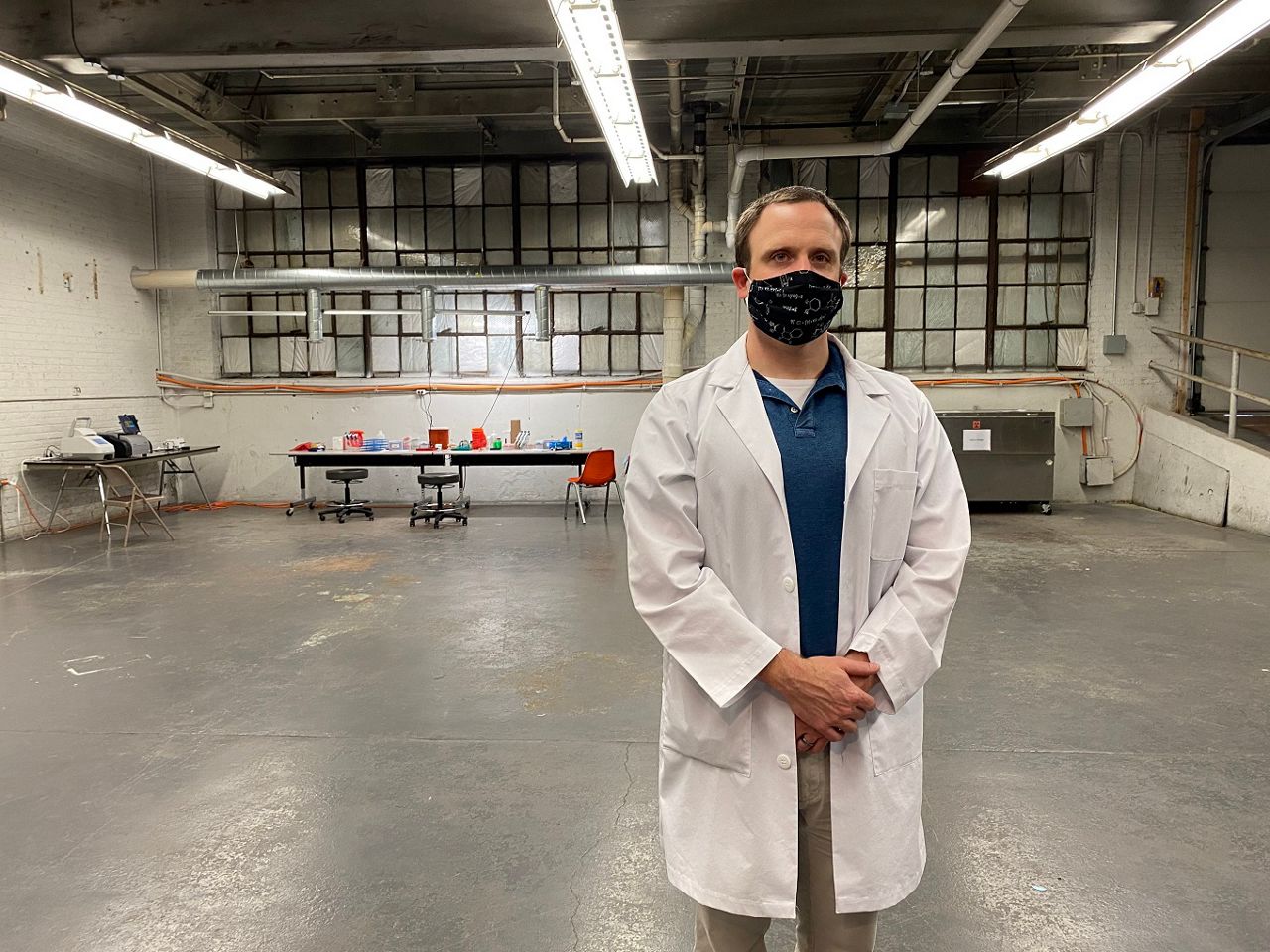
Chris Mason, a geneticist -- and brother of Racine's mayor -- who helped bring LAMP testing to the city. (Maddie Burakoff/Spectrum News 1)
Though using this test to detect SARS-CoV-2, the virus that causes COVID-19, is still pretty new, scientists are hopeful that the test could have a big impact.
“I think that the potential of this type of test for helping people to go back to work and return to school is just really, really high,” says Alison Kriegel, a professor from the Medical College of Wisconsin (and elementary school classmate of Mason’s) who was brought on to help run the Racine study.
The LAMP reaction, explained
Much like the widely used PCR tests, these new LAMP tests try to track down any pieces of viral genetic material in a person’s sample. But they use a slightly different chemical mechanism, explains Dawn Dudley, a senior scientist in pathology and laboratory medicine at UW-Madison. Dudley is part of another research team at UW-Madison that is working to adapt LAMP testing for the novel coronavirus.
The PCR process involves a set of primers that keep breaking apart and replicating small segments of DNA in the sample. But the LAMP process involves a different set of primers that work together to build long, ribbon-like DNA strands, Dudley says.
“Instead of just making a bunch of short pieces, it starts generating these really long pieces, and they'll randomly sort of stop generating and start new one,” she says. “In the end, because you get really big pieces of DNA, it means you generate so much more product.”
One benefit of this method is that it can happen at a constant temperature, Dudley says, whereas PCR requires a cycle of temperature changes to spur the reaction. This reduces the need for specialized equipment to move through heating and cooling periods.
Mason says the reaction makes use of enzymes from bacteria that live in extreme temperature conditions like hot springs. Because these enzymes are able to function at a high heat, they just keep working away in the LAMP reaction temperature of 65 degrees Celsius.
Another benefit of the LAMP test: The results are easy to see with the naked eye — unlike in the current PCR tests, which require specialized equipment to read.
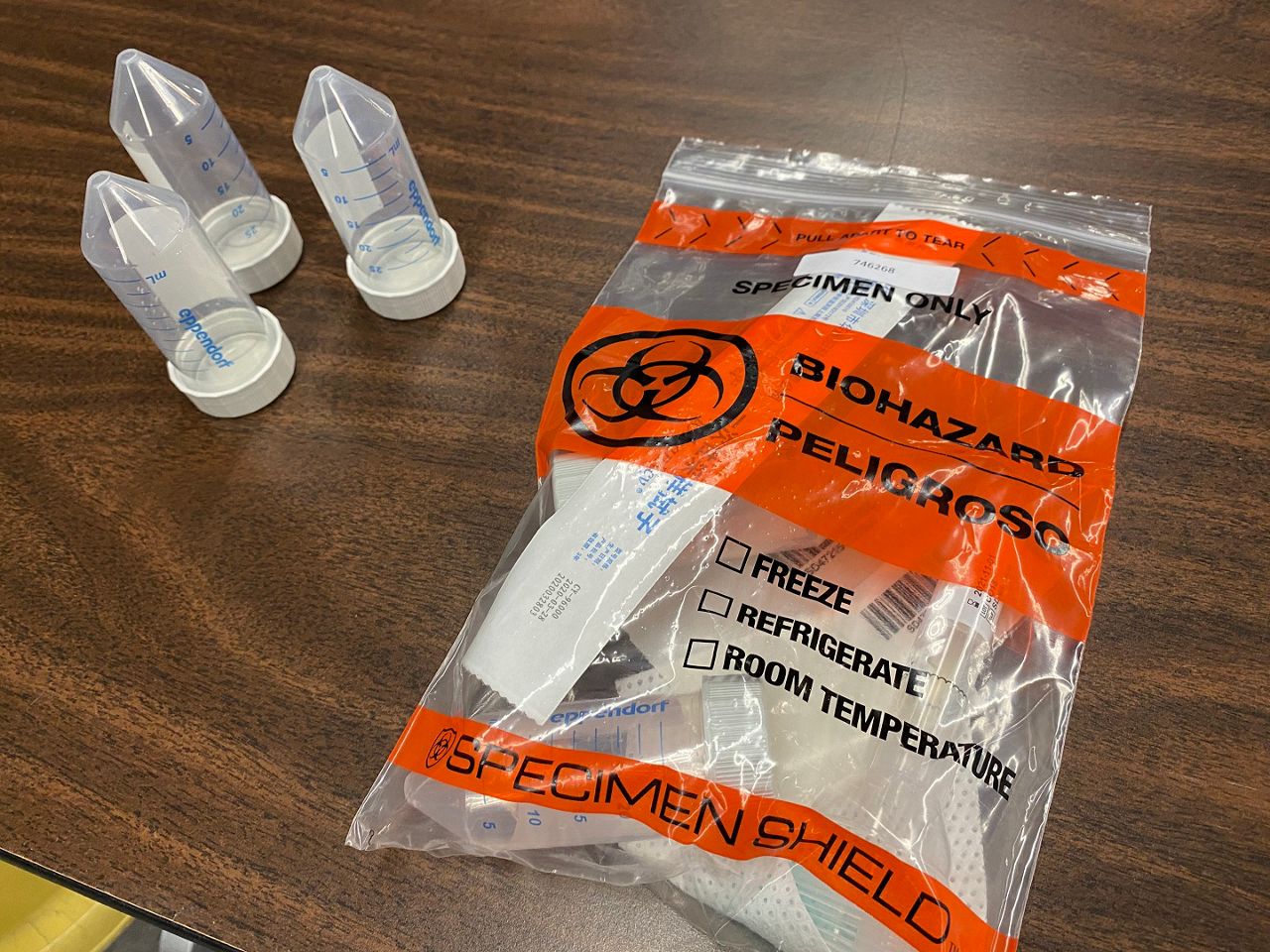
A coronavirus test kit from the Racine site, including tubes for saliva samples. (Maddie Burakoff/Spectrum News 1)
If there is viral genetic material present in the sample, the reaction will copy so much DNA that the pH of the solution actually changes, Dudley says. This turns the solution from a bright pink to a clear yellow, signaling a positive test.
Plus, because the LAMP tests use a different set of supplies from the widespread PCR tests, they aren’t held back by the same shortages that are plaguing labs across the world — from the physical swabs to the chemical reagents used in the reactions.
“This is something that doesn't have as many limitations on the supply chain,” says Christina Newman, an associate scientist in pathology and laboratory medicine at UW-Madison who is also part of the LAMP research team there. “And it may be what we really need to really be able to ramp up testing as much as we think we need to do, in order to really open things up and really curb the spread of the virus.”
Labs on the go
Right now, Mason and the team in Racine are completing what is basically a trial run of these LAMP tests to make sure their process works. Though LAMP tests have gotten FDA approval for use with nasopharyngeal swabs and, recently, the less-invasive nasal swabs, Mason says they still have to officially validate that the tests work with saliva samples as well. To do so, they’ve created a pretty unconventional lab setup, supported by philanthropic grants from the WorldQuant Foundation, the Pershing Foundation, and Citadel.
The research is taking place in Racine’s City Hall Annex, a stocky brick building that the city converted from an old boxing gym years ago. The lab consists of one massive and still largely empty room, whose concrete floors and industrial look are a far cry from a traditional scientific setting. Plus, instead of lab technicians running the tests, the researchers have recruited volunteers from the city’s fire department.
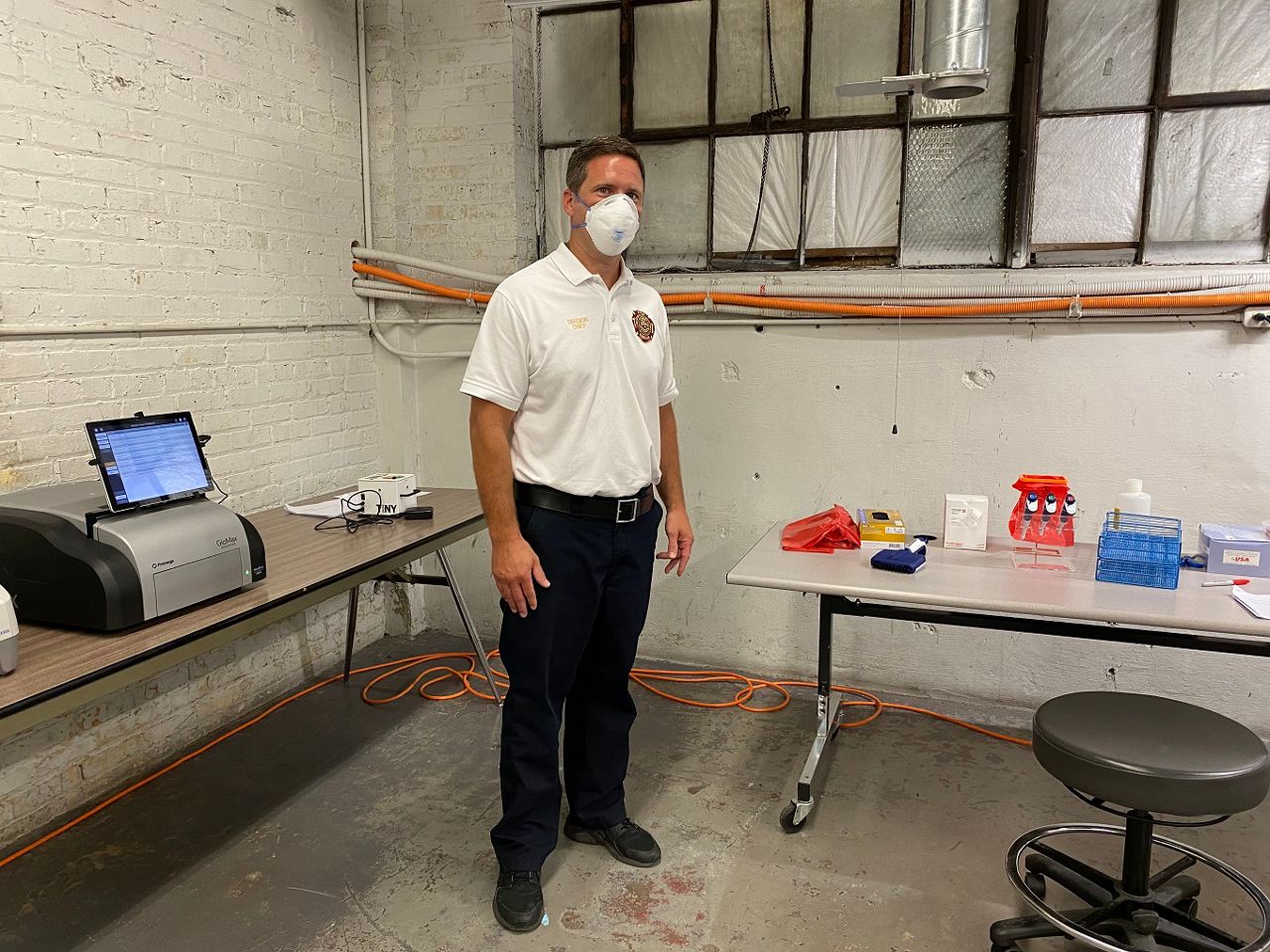
Brian Wolf of the Racine Fire Department, who is helping perform the tests for the research study. (Maddie Burakoff/Spectrum News 1)
Firefighters are actually the “perfect fit” for this research work because of their paramedic training and their desire to serve, says Brian Wolf, division chief of professional standards and EMS with the Racine Fire Department.
“We respond when they need us the most. We don't think twice — we'll run into a burning building and help somebody,” Wolf says. “This is just another way that the fire department can really just look at the community and try to help them.”
Every weekday at 7 a.m., Wolf and his team suit up in their PPE and open up the Annex to start collecting samples. So far, they’ve only been testing city employees as part of the research study, with the possibility of opening up the testing pool if their results turn out well. They gather 5 mL saliva samples, which can actually feel like a lot of spit to produce, especially if people are dehydrated, Mason says.
By late morning, the firefighters are getting down to the testing process. They first cook the saliva samples at 95 degrees Celsius, which deactivates the virus to make it safer to work with, Wolf says. From there, the process mostly requires a lot of pipetting solutions. Wolf says it’s a surprisingly tricky task that requires a lot of patience.
“We all have a newfound respect for scientists, people who work in a lab,” he says. “You don't really realize what people do until you start trying to do it.”
Around midday, the team usually has results ready and can start notifying employees.
Kriegel, who helped train the firefighters to perform the LAMP tests, says she was excited by the chance to work in an unconventional setting.
One of the struggles of the COVID-19 crisis, she says, is that some people haven’t known exactly how to help out, even if they have the skills and the desire to do so. But the work in Racine has shown that people like firefighters — who are present in just about every community — can also play a big role in combating a pandemic.
“The real key is that we've sort of demonstrated that people can be trained to do this, you know, that don't have a science background, that aren't in the laboratory,” Kriegel says. “We're doing this here on the ground.”
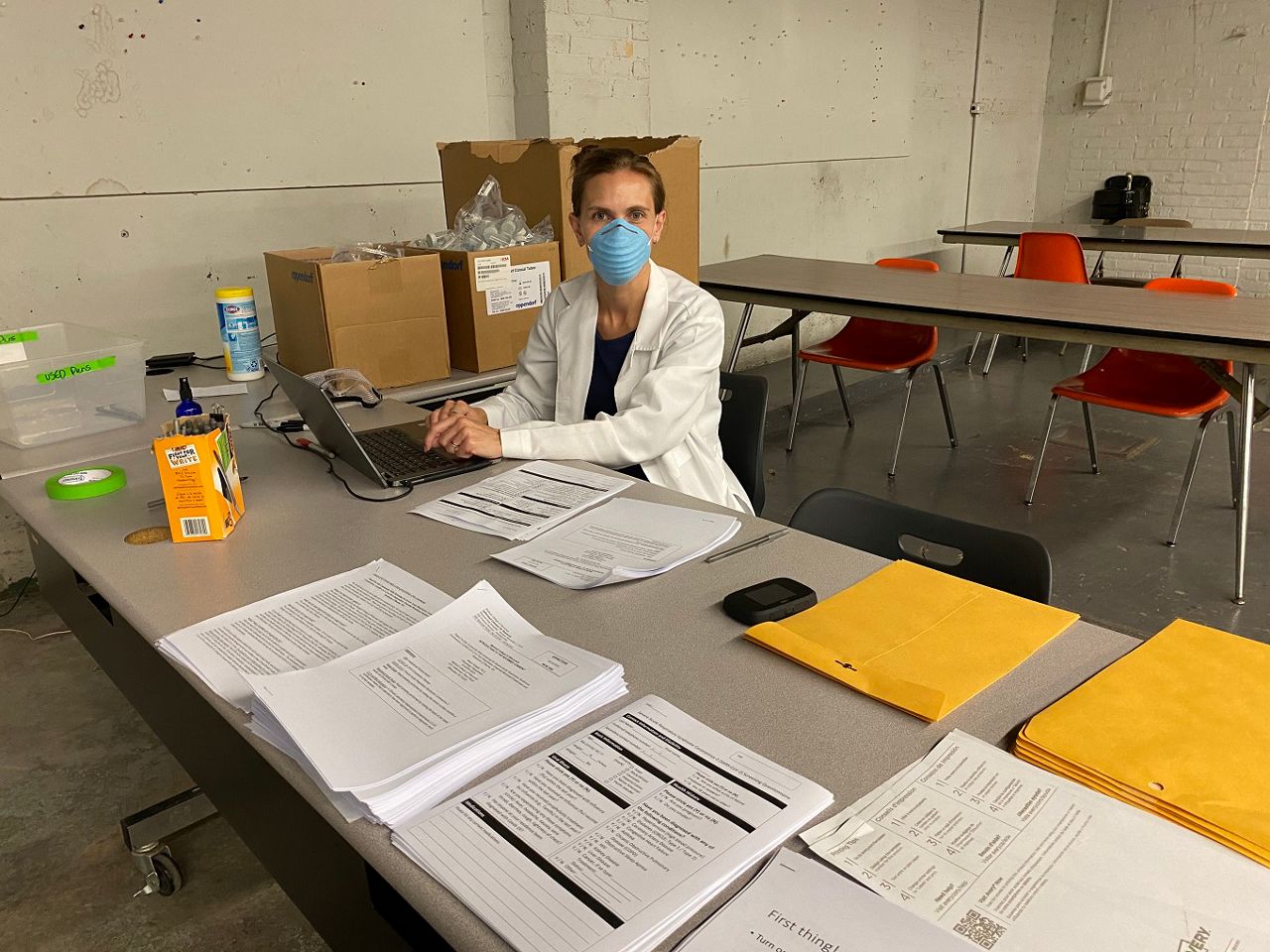
Alison Kriegel from the Medical College of Wisconsin, who trained the firefighters and helps run the study in Racine. (Maddie Burakoff/Spectrum News 1)
The UW-Madison team, led by virologist Dave O’Connor, started out by running the tests with leftover sample swabs from hospitals. Now, they’ve also moved into collecting their own saliva samples.
Some of these tests are done in the team’s lab space, inviting others working in the building and the research institute next door over for voluntary tests. But others involve an unusual lab setup of their own: a mobile “COVan” that they can pack up with their testing supplies and bring to various locations. So far, they’ve been using the van to set up temporary testing outside of a private school in Madison.
“We’re working outside, and we can set everything we need to collect our samples, to run them through the entire assay from start to finish,” Dudley says. “And basically, we don't leave the site until we have the results.”
The researchers hope this work can show that with the LAMP testing, you can really set up a lab anywhere — at a school, for example, or a workplace. This way, we could regularly test large groups of people and catch infections early on, even if people are asymptomatic and wouldn’t otherwise think to get tested.
“You just need to stop those infectious people from coming into contact with a lot of other people,” Newman says. “And then you take away all the virus’s hosts.”
What’s next for LAMP?
There’s still some research work required before these scientists decide whether to roll out the LAMP tests to the wider public, and what that process would look like.
During the pandemic, the FDA has sped up its approval process for diagnostic tests. Still, Mason says, the Racine team needs a wider data set to meet the requirements and apply for emergency use authorization for the saliva tests.
Among the couple hundred samples they’ve collected so far, though, he says the positivity rate — the percentage of tests that do show traces of the virus — has been in line with what they would expect based on national trends.
He expects that, if things continue to go well, they’ll be able to submit to the FDA within the next few weeks. From there, communities all over the U.S. could set up similar sites, leveraging the relative simplicity of the LAMP method.
“The model we have here could be deployed anywhere in the country,” Mason says. “Almost everyone has firemen, paramedics, and police people that are almost, by their job definition, very amenable to training, where they can learn a protocol and really deploy quickly.”
Dudley says the UW-Madison team is still deciding whether to submit for FDA approval as a diagnostic test, or to use the test as more of a screening tool that will help identify potential people who should follow up with another test.
In their LAMP trials, the team has seen somewhat lower testing sensitivity compared to PCR tests, meaning that there needs to be more virus present in order for the LAMP test to catch it. Still, using the tests for widespread, frequent screenings would make a big difference in catching infections, Newman says.
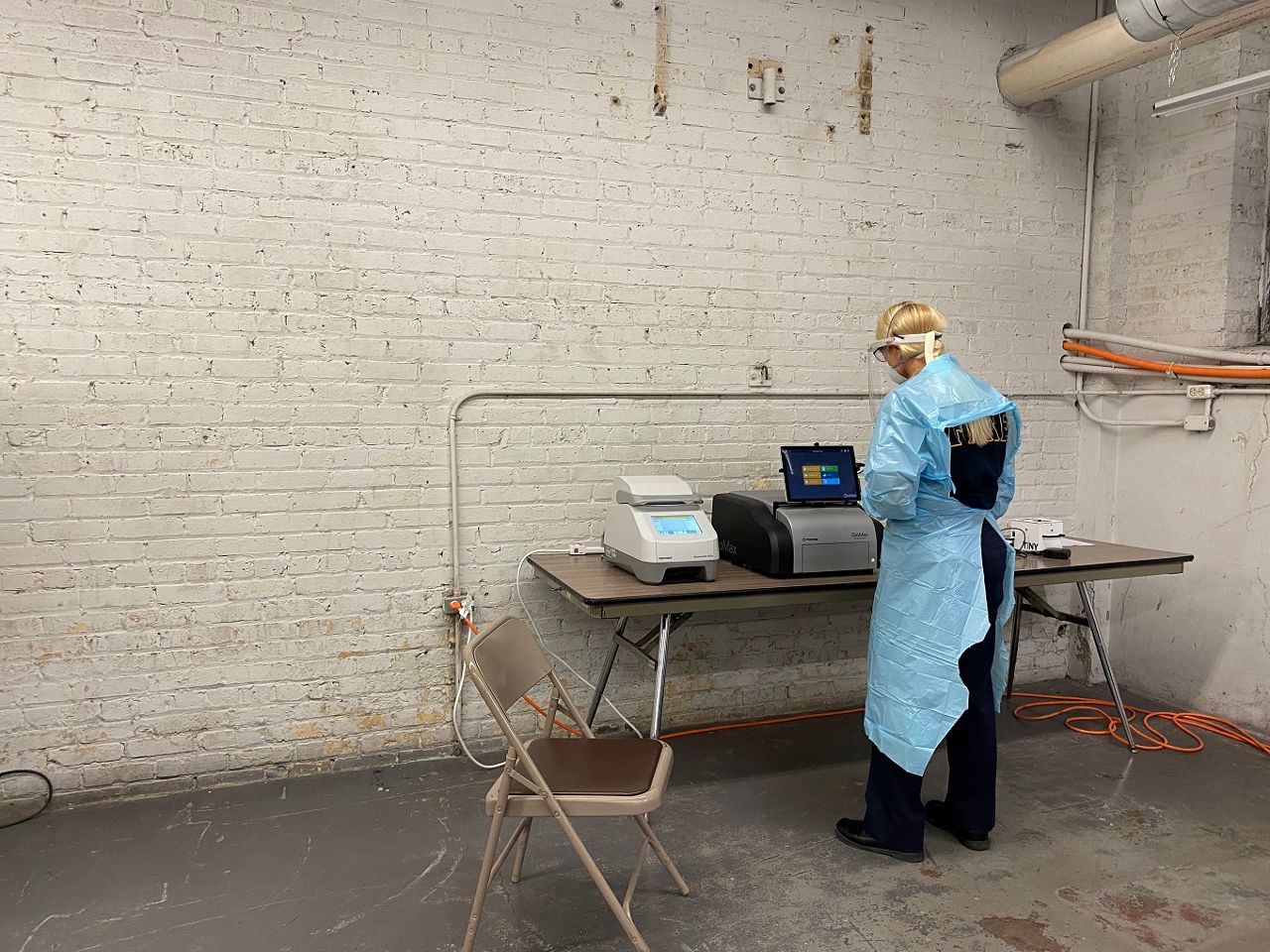
A firefighter in Racine works on a sample. (Maddie Burakoff/Spectrum News 1)
These two groups aren’t the only ones looking into LAMP as a way to combat the coronavirus pandemic. Scientists all over the world are investigating the possibilities of this method, and working together in the process. LAMP researchers meet up for weekly Zoom calls to talk about their work and share resources in an open Slack channel. It’s been an important shift toward collaboration and data sharing instead of competition, Dudley says.
At this point in the pandemic, many of these researchers are simply exhausted. Mason says he’s feeling some “deja vu” in seeing the rise in cases in his home state after experiencing some of the worst of the pandemic in New York City. And Newman says it’s highly stressful to deal with samples in real time and feel an “intense obligation” to give each person an accurate result.
Still, the scientists agree that the stress is worth the chance to help keep communities healthy.
“This is giving us that opportunity to be right on the front lines making a difference,” Dudley says. “And you know, in light of a pandemic, we all want to do what we can do.”
"try" - Google News
August 01, 2020 at 09:30PM
https://ift.tt/31d71TE
Wisconsin Researchers Try A Quicker, Easier Coronavirus Test - Spectrum News 1
"try" - Google News
https://ift.tt/3b52l6K
Shoes Man Tutorial
Pos News Update
Meme Update
Korean Entertainment News
Japan News Update
Bagikan Berita Ini














0 Response to "Wisconsin Researchers Try A Quicker, Easier Coronavirus Test - Spectrum News 1"
Post a Comment